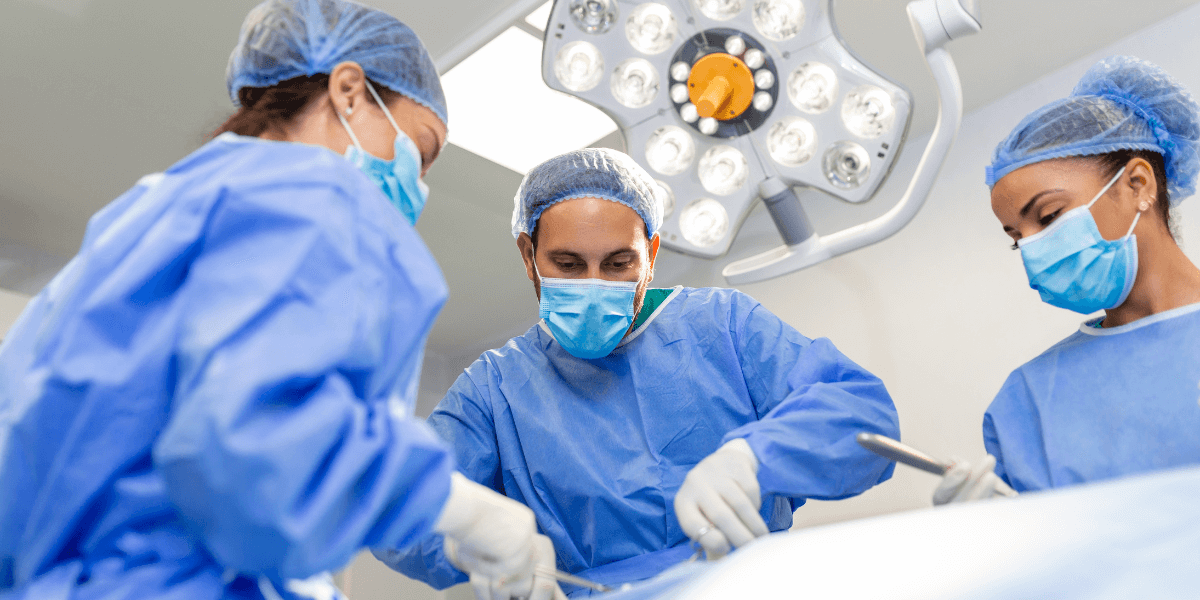


Have you ever experienced severe stomach pain or discomfort? It could be due to a concern with your gallbladder. The gallbladder, a small pouch close to the liver, stores bile, a thick liquid crucial for digestion. But sometimes, this bile can harden into gallstones, leading to blockages and intense pain. The operation to remove an unhealthy gallbladder is a cholecystectomy. It's one of the most common surgeries in the U.S. Approximately 300,000 gallbladder removals are performed annually.
Continue reading to learn more about the treatment of gallbladder removal and all the critical aspects of it.
A cholecystectomy is a common surgery to remove the gallbladder. The gallbladder is a pear-shaped organ located directly below the liver on the upper right side of the belly. This organ collects and stores bile, a digestive fluid generated by the liver.
It is a safe surgery with a low risk of complications. Most cholecystectomies are minimally invasive surgeries that have an easy recovery.
After gallbladder removal, the body adjusts to a few changes. Since the gallbladder is no longer there to store bile, which helps digest foods, digestion might feel different. Some people may experience diarrhea or loose stools, especially after eating greasy or fatty foods. However, these symptoms often improve over time as the body adapts. Without a gallbladder, bile flows directly from the liver into the small intestine, aiding digestion.
Overall, while there may be some adjustments, many people find that their bodies adapt well to the absence of the gallbladder, and they can continue with their daily activities without significant problems. Following any post-surgery instructions from your healthcare provider to ensure a smooth recovery is essential.
See Also: Colorectal Surgery: Everything You Need to Know
Depending on your condition, your healthcare provider may suggest two main types of cholecystectomy treatment.
They are as follows:
Open Surgery: The procedure involves making a single cut (incision) around 4 to 6 inches long in the upper right side of your belly. The muscle and tissue are pulled back to reveal your liver and gallbladder. Your surgeon then removes the gallbladder. After closing the incision, you will be taken to a recovery area.
Laparoscopic Surgery: In this procedure, the surgeon makes many small incisions (cuts) in the belly. A tube containing a small video camera is then inserted into your belly through the incision. Your surgeon monitors a video monitor in the operating room while removing your gallbladder with instruments put via the other incisions.
During the weeks preceding your gallbladder removal operation, you will be required to undergo a preoperative evaluation in the hospital. Your doctor will provide you with specific instructions on when to stop eating and drinking before your procedure, typically the night before.
A cholecystectomy is commonly performed under general anesthesia. This implies you will not be awake throughout the process. Anesthesia medication is administered through a vein in your arm. Once the medications have taken effect, your healthcare team will insert a tube down your neck to assist you in breathing.
Depending on your situation, your surgeon will perform one of the surgical procedures. In all the procedures, incisions are made so that the surgeon can remove the gallbladder. After your gallbladder is removed, the incisions are stitched up.
You will be transferred to a recovery area as the anesthetic wears off. Then, you'll be moved to a hospital room to finish your treatment.
Cholecystectomy treatment has many benefits, with the most notable being that it can relieve the pain and discomfort of gallstones.
Here are some other advantages of cholecystectomy:
See Also: Understand the Causes, Symptoms, and Treatment of Adrenal Cancer
A cholecystectomy is usually considered a safe medical procedure. However, like with any operation, there are chances of complications, which may include:
The length of your recovery period is determined by the type of surgery you have undergone. Usually, you may have to stay 2-3 days in the hospital so that the doctors can monitor you for any complications in case you have undergone an open surgery. You will also need 3-4 weeks of rest; after which you can resume your daily activities.
In the case of laparoscopic surgery, you will usually be released on the same day or after 1-day post-surgery. Your doctors may suggest you avoid hard or strenuous work for at least a week.
Cholecystectomy treatment options vary depending on the condition's severity and your specific needs. With proper consultation with your doctor, determine which surgery suits you and how they are performed. They will also let you know what are the risks of the surgery.
Are you suffering from gallbladder problems and want to get a gallbladder removal treatment? If yes, visit us at Far North Surgery in Anchorage, AK. Our highly competent, board-certified general surgeons collaborate with other specialists to offer top-grade medical care to all our patients.
Dr. Madhu Prasad, our experienced surgeon, has been honored with the Best of Anchorage Awards for various treatments. His proficiency in the latest surgical techniques ensures that you will receive the highest level of care every time you visit our clinic. Contact us today to learn more about our treatment plans.